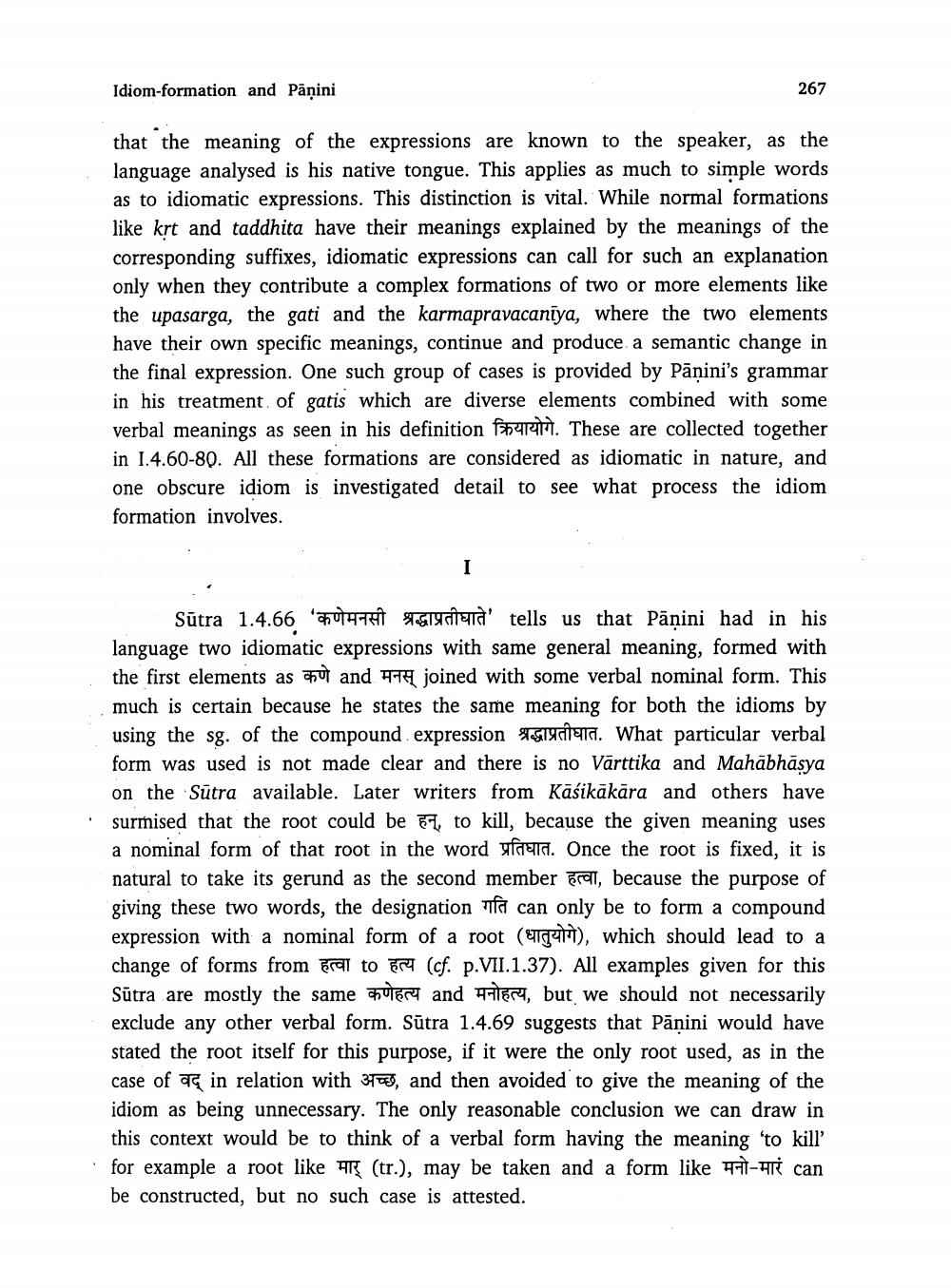________________
Idiom-formation and Pāņini
267
that the meaning of the expressions are known to the speaker, as the language analysed is his native tongue. This applies as much to simple words as to idiomatic expressions. This distinction is vital. While normal formations like krt and taddhita have their meanings explained by the meanings of the corresponding suffixes, idiomatic expressions can call for such an explanation only when they contribute a complex formations of two or more elements like the upasarga, the gati and the karmapravacaniya, where the two elements have their own specific meanings, continue and produce a semantic change in the final expression. One such group of cases is provided by Pāṇini's grammar in his treatment of gatis which are diverse elements combined with some verbal meanings as seen in his definition fher. These are collected together in 1.4.60-80. All these formations are considered as idiomatic in nature, and one obscure idiom is investigated detail to see what process the idiom formation involves.
Sūtra 1.4.66 Utane Grecitand' tells us that Pāņini had in his language two idiomatic expressions with same general meaning, formed with the first elements as out and joined with some verbal nominal form. This much is certain because he states the same meaning for both the idioms by using the sg. of the compound expression Trend. What particular verbal form was used is not made clear and there is no Vārttika and Mahābhāsya on the Sūtra available. Later writers from Kāśikākāra and others have surmised that the root could be to kill, because the given meaning uses a nominal form of that root in the word ufreid. Once the root is fixed, it is natural to take its gerund as the second member Eral, because the purpose of giving these two words, the designation na can only be to form a compound expression with a nominal form of a root (Eger), which should lead to a change of forms from bral to FR (cf. p.VII.1.37). All examples given for this Sūtra are mostly the same UTERY and ECT, but we should not necessarily exclude any other verbal form. Sūtra 1.4.69 suggests that Panini would have stated the root itself for this purpose, if it were the only root used, as in the case of ac in relation with 3409, and then avoided to give the meaning of the idiom as being unnecessary. The only reasonable conclusion we can draw in this context would be to think of a verbal form having the meaning 'to kill' for example a root like मार् (tr.), may be taken and a form like मनो-मारं can be constructed, but no such case is attested.




